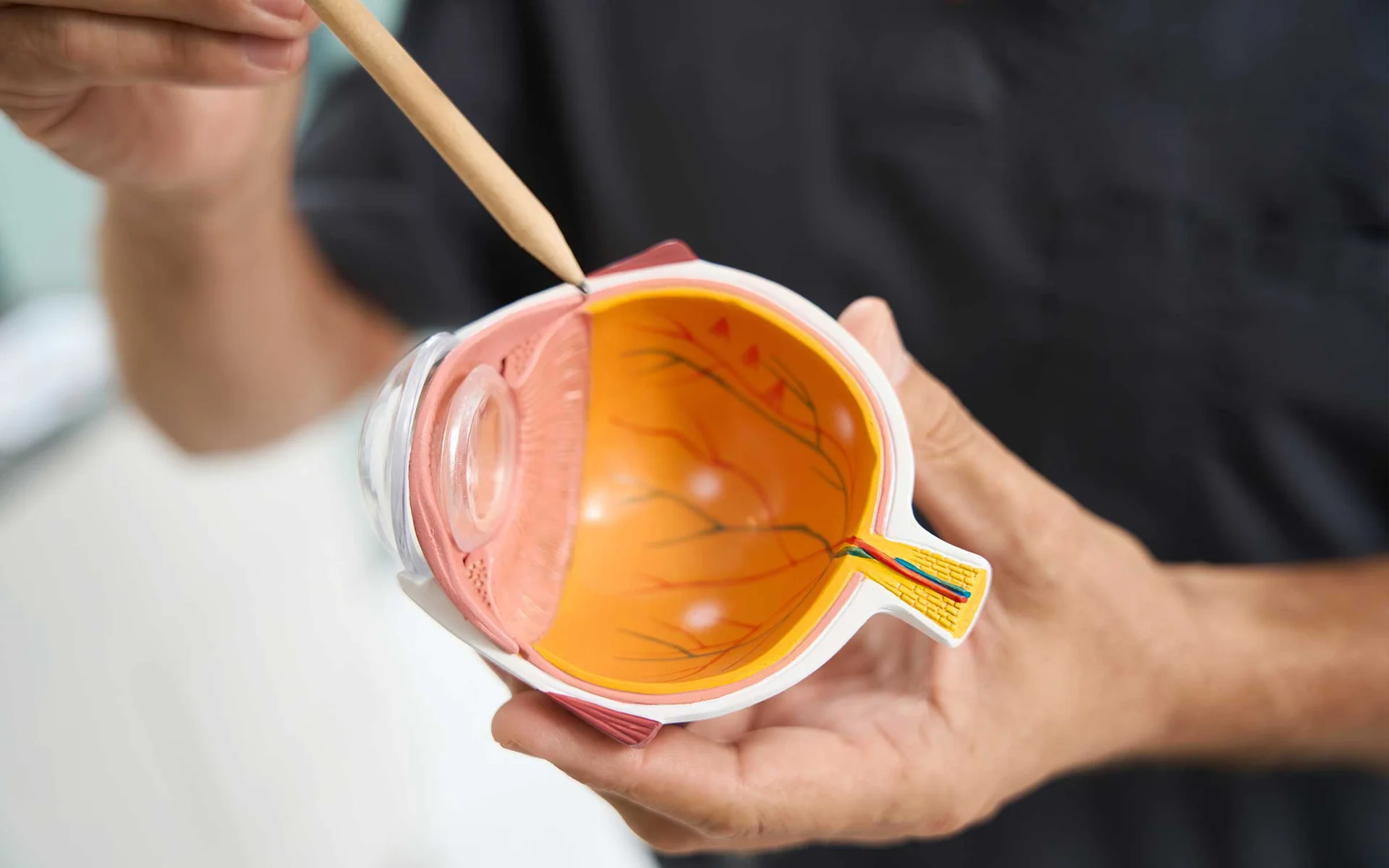"Cataracts are a silent threat to your vision, one that can only be stopped through surgical intervention."
What is the cataract?
A cataract is a condition where the eye's lens becomes clouded, leading to a loss of vision. Normally, the eye's lens is transparent, allowing light to pass through to the retina. As a cataract develops, the lens becomes cloudy, obstructing the passage of light and making it difficult to see clearly. Cataracts are most commonly associated with aging, but factors such as diabetes, trauma, and prolonged use of steroids can accelerate cataract formation. Cataracts are one of the leading causes of blindness worldwide and can be treated surgically.
What are the symptoms of cataracts?
The most common symptoms of cataracts include blurred or cloudy vision, faded colors, increased sensitivity to light, difficulty seeing at night, and double vision. In the early stages, cataract symptoms may be mild and go unnoticed by the individual. However, over time, these symptoms worsen, making everyday activities such as driving or reading more challenging. Cataract symptoms become more noticeable with age and are typically diagnosed through an eye examination by an ophthalmologist.
Who is more likely to develop cataracts?
Cataracts are most commonly seen in older individuals. The risk of developing cataracts increases significantly in people over the age of 60. However, smokers, those with prolonged exposure to sunlight, and individuals with chronic conditions such as diabetes are also at high risk. Additionally, genetic factors can play a role in cataract development. People with a family history of cataracts are also at risk.
How are cataracts diagnosed?
Cataracts are usually diagnosed through a detailed eye examination by an ophthalmologist. The doctor assesses the patient’s visual acuity and examines the lens of the eye to detect the presence of cataracts. Special techniques, such as pupil dilation and biomicroscopy, are used to examine the cloudiness of the lens. These evaluations are crucial in determining the stage of cataract development and creating an appropriate treatment plan.
How are cataracts treated?
The only effective treatment for cataracts is surgery. During cataract surgery, the cloudy lens is removed and replaced with an artificial intraocular lens (IOL). This surgery is typically performed under local anesthesia and is completed in a short time. Cataract surgery is highly successful in restoring vision, and most patients experience a significant improvement in visual quality after the procedure. There is currently no medication that can stop the progression of cataracts, making surgery the only viable treatment.
Is cataract surgery risky?
Cataract surgery is a common and generally safe procedure. However, like all surgeries, it carries some risks. One of the most common complications is posterior capsule opacification (PCO), a condition where the lens capsule becomes cloudy after surgery. Other rare complications include infection, retinal detachment, or an increase in intraocular pressure. These risks are usually low and can be minimized with regular follow-up appointments with the doctor after surgery.
What is the recovery process like after cataract surgery?
The recovery process after cataract surgery is typically quick, with full vision restoration occurring within a few weeks. Immediately after surgery, mild discomfort may be felt, but this is temporary. Eye drops and medications prescribed by your doctor are crucial for reducing the risk of infection and speeding up recovery. During the first few days after surgery, it is important to avoid activities like bending over and lifting heavy objects.
When is cataract surgery necessary?
Cataract surgery is necessary when vision loss begins to affect daily activities. When cataracts make routine tasks like driving, reading, or watching TV difficult, surgical intervention should be considered. If the cataract continues to progress, your ophthalmologist may recommend the timing of surgery. If vision loss impacts your quality of life, surgery is the most appropriate solution.
What types of lenses are implanted during cataract surgery?
During cataract surgery, the removed lens is replaced with an artificial intraocular lens (IOL). The type of lens implanted is determined by the patient's visual needs. Monofocal lenses generally provide focus at a single distance, correcting either distance or near vision. Multifocal and trifocal lenses provide both near and distance vision, reducing the need for glasses. Additionally, toric lenses are available to correct astigmatism.
Is it necessary to wear glasses after cataract surgery?
After cataract surgery, most patients achieve clear distance vision without glasses. However, glasses may still be necessary for near vision or astigmatism. Depending on the type of lens implanted, some patients may achieve clear vision at both near and far distances without the need for glasses. Multifocal or toric lenses can be effective in this regard, but the need for glasses may not be eliminated in every case.
What are the complications after cataract surgery?
The most common complication after cataract surgery is posterior capsule opacification (PCO), where the capsule behind the lens becomes cloudy, usually occurring months or years after surgery. PCO can be easily treated with laser therapy. Other rare complications include retinal detachment, infection, and increased intraocular pressure. These complications are generally low-risk and are carefully monitored by the surgeon.
Can I exercise after cataract surgery?
After cataract surgery, light activities such as walking are generally safe. However, it is recommended to avoid strenuous exercise and sports activities. Especially during the first few weeks, it is important to avoid activities like swimming, heavy lifting, or those that require you to bend over. Your doctor will guide you on which activities are safe during the postoperative period and when you can return to normal activities.
How long does cataract surgery take?
Cataract surgery usually takes 15 to 30 minutes, but the entire process, including preoperative preparations and postoperative rest, can take several hours. Local anesthesia is used during the surgery, so the patient does not feel pain. After a short rest period following the surgery, patients are typically discharged the same day and can return home.
Will colors appear more vibrant after cataract surgery?
Yes, many patients report that colors appear more vibrant and clear after cataract surgery. The cloudiness caused by cataracts can make colors appear dull and muted. After surgery, with the new lens, patients perceive colors more accurately and vividly. This improvement in color perception enhances overall visual quality and improves the patient's quality of life.
Is it possible to prevent cataracts?
There is no guaranteed way to completely prevent cataracts, but certain measures can reduce the risk. Wearing sunglasses to reduce exposure to UV rays, maintaining a healthy diet, avoiding smoking, and managing chronic conditions like diabetes can help lower this risk. Regular eye exams for early detection and monitoring can also slow cataract progression. Although lifestyle changes may not entirely prevent cataract formation, they can be effective in slowing its progression.
Referanslar
Nizami AA, Gurnani B, and Gulani AC, Cataract, in StatPearls. 2024, StatPearls Publishing. Copyright © 2024, StatPearls Publishing LLC.: Treasure Island (FL).
Delbarre M and Froussart-Maille F, [Signs, symptoms, and clinical forms of cataract in adults]. (2020).
Patnaik JL, et al., Prevalence of cortical cataracts by sex, race, and ethnicity in a Colorado cohort. (2024).
Agrawal S, Fledderjohann J, and Ghosh S, Risk factors for self-reported cataract symptoms, diagnosis, and surgery uptake among older adults in India: Findings from the WHO SAGE data. (2021).
Moshirfar M, Milner D, and Patel BC, Cataract Surgery, in StatPearls. 2024, StatPearls Publishing. Copyright © 2024, StatPearls Publishing LLC.: Treasure Island (FL).
Yong GY, et al., Risk factors affecting cataract surgery outcome: The Malaysian cataract surgery registry. (2022).
Beyene AM, et al., Time to recovery from cataract and its predictors among eye cataract patients treated with cataract surgery: A retrospective cohort study in Ethiopia. (2021).
Vision 2020: the cataract challenge. (2000).
Lapp T, et al., Cataract Surgery-Indications, Techniques, and Intraocular Lens Selection. (2023).
Kyei S, et al., Visual function, spectacle independence, and patients' satisfaction after cataract surgery- a study in the Central Region of Ghana. (2021).
Bajraktari G, et al., Early and Late Complications after Cataract Surgery in Patients with Uveitis. (2023).
Hiratsuka Y, et al., Improvement in Activities of Daily Living after Cataract Surgery in the Very Old. (2021).
Govinda Raju D, Ramli N, and Salowi MA, Incidence and Predictive Risk Factors for Post-Cataract Surgery Endophthalmitis in Ministry of Health Hospitals from 2012 to 2020. (2024).
Jolly JK, et al., The Effect of Cataract on Color Vision Measurement with the Low-Vision Cambridge Colour Test: Providing an Adjustment Factor for Clinical Trials. (2022).
Braakhuis AJ, et al., Nutritional Strategies to Prevent Lens Cataract: Current Status and Future Strategies. (2019).
















